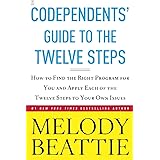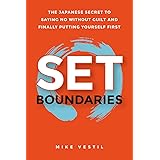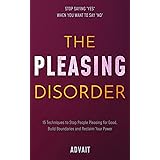The ubiquity of online shopping has fundamentally reshaped our relationship with consumption. What began as a convenient alternative to brick-and-mortar stores has burgeoned into a pervasive force, driving what many now term a societal overconsumption trend. As the accompanying video vividly illustrates, America’s profound engagement with online retail is not merely a matter of convenience; it delves into deep-seated psychological and evolutionary compulsions that often lead to unintended consequences for individuals and the planet.
The ease with which we acquire goods today stands in stark contrast to past generations. No longer are consumers bound by store hours, the physical hunt for products, or the inevitable wait in checkout lines. Instead, a universe of products is accessible instantly, requiring only a few clicks. This frictionless experience, coupled with often irresistible pricing, encourages a culture of impulse buying where purchases are made “without a second thought,” as the video aptly notes.
The Psychological Hooks: Dopamine and Desire
At the heart of this modern shopping phenomenon lies a powerful neurochemical reward: dopamine. When individuals engage in the act of buying something, the brain releases dopamine, generating a pleasurable sensation. This “dopamine hit” acts as a potent reinforcer, encouraging repeat behavior. However, as articulated by the staff writer from The Atlantic in the video, online shopping offers a “double benefit.” The initial purchase triggers a dopamine release, but so too does the anticipation of delivery and the subsequent unboxing experience. Imagine if every small act of acquisition felt like a mini-celebration; this biological wiring makes online retail profoundly addictive.
Evolutionary Roots of Accumulation
Furthermore, our propensity to accumulate ‘stuff’ is not merely a modern contrivance but possesses deep evolutionary roots. Historically, survival depended on the ability to gather and store resources. Those who amassed ample food for winter or sufficient wood for shelter were more likely to thrive. This innate desire to secure resources—to “get enough stuff to make sure that we’re gonna survive”—persists within us today, even amidst an unprecedented abundance. In contemporary society, this ancient drive manifests as a constant urge to acquire more, despite living in environments overflowing with possessions.
The Rising Tide of Consumption: Quantifiable Impacts
The statistics paint a compelling picture of an accelerating consumption pattern. The video highlights a significant surge in spending and acquisition over recent decades, far outstripping population growth. For instance, in 2017, American consumers spent an astonishing $240 billion on goods such as jewelry, watches, luggage, books, and phones. This figure represents twice the amount spent in 2002, even though the US population only increased by a modest 13% during the same period. This disproportionate rise indicates a dramatic shift in per capita consumption. Similarly, spending on personal care items, including lotions and makeup, also doubled within that timeframe, underscoring a broad-based increase in purchasing across various categories.
The apparel industry, in particular, showcases this trend prominently. Americans now spend 20% more on clothes than they did in 2000, with the average individual purchasing an astounding 66 garments each year. This statistic is particularly striking when considering the volume of clothing entering and leaving our wardrobes. Even in the realm of electronics, where prices have generally declined, total dollar spending continues to climb. This suggests that while individual items may be cheaper, consumers are simply buying more of them, leading to an overall increase in expenditure and, consequently, greater material resource use.
The Problem of Unused Purchases and Difficult Returns
A significant byproduct of this effortless online acquisition is the accumulation of unused items. Anecdotal evidence from the video, with individuals confessing to owning waffle makers never used or lipsticks left untouched, resonates widely. A survey cited in the video found that a staggering nine out of ten shoppers never or rarely return online purchases. This reluctance often stems from the perceived hassle versus the monetary return. Imagine deciding if a $5 refund is truly worth the effort of printing a label, packaging an item, and making a trip to the post office. For many, the mental calculus results in simply keeping the item, contributing to household clutter and eventually, waste.
The Environmental Toll of Rampant Consumerism
This relentless pursuit of “more stuff” has profound and increasingly critical environmental consequences. The journey of an item from purchase to disposal reveals a grim reality for our planet. Much of what is bought, used briefly, or never used at all, ultimately becomes waste, contributing to vast landfills and polluting natural ecosystems.
Clutter, Landfills, and Fast Fashion’s Footprint
The sheer volume of possessions we accumulate is evident in our living spaces. The average square footage of homes in the US has increased by 23% in the last two decades, yet simultaneously, the number of storage facilities has doubled. This paradox highlights our struggle to contain our growing inventory of goods. While donating unwanted items to thrift stores offers a semblance of virtuous disposal, the reality is often less rosy. It is estimated that a substantial portion of donated clothes ultimately ends up in landfills, rather than finding a second life. The average American discards an estimated 81 pounds of clothes and textiles annually—nearly five times the amount in 1980—underscoring the unsustainable practices of fast fashion and disposable consumerism.
Beyond textiles, the global plastic crisis stands as a stark testament to our consumption habits. In 2015 alone, humanity collectively discarded 26 million tons of plastics, with a meager 9% successfully recycled. This means the overwhelming majority persists in the environment for centuries. The video chillingly predicts that by the middle of this century, the sheer volume of plastic items in our oceans will surpass the number of fish. This is not merely an aesthetic problem; it represents a fundamental threat to marine ecosystems, biodiversity, and potentially, human health.
The Vicious Cycle of Low Quality and Resource Depletion
The consumer demand for cheaper goods creates a vicious cycle. Manufacturers, under pressure to cut costs, inevitably compromise on quality. As the Staff Writer from The Atlantic observes, clothes from fast fashion retailers may lose their shape after a few washes, and appliances that once lasted a decade now fail within three years. This planned obsolescence drives continuous repurchase, further fueling consumption and resource depletion. The projected growth of the global middle class by three billion people in the next two decades, combined with our current trajectory, indicates that we are on track to double the material resources we use by 2060. Such a trajectory is inherently unsustainable, pushing planetary boundaries to their breaking point.
Furthermore, the global waste management infrastructure is reaching a crisis point. Countries like China, historically major importers of recyclable waste, are increasingly refusing to accept other nations’ “junk.” Consequently, landfills across America and other developed nations are scrambling to manage an ever-increasing deluge of discarded materials, necessitating innovative and sustainable solutions.
Forging a Path Forward: Breaking the Cycle of Overconsumption
While the challenges posed by America’s shopping addiction are significant, a growing movement of consumers and innovators are actively seeking alternatives. These initiatives, highlighted in the video, offer hopeful blueprints for a more sustainable future.
Individual Actions: Minimalism and Mindful Consumption
Several individual-led movements are gaining traction:
- Zero-Waste Households: Advocates commit to producing virtually no trash, often by rethinking consumption habits, refusing single-use items, and embracing reusable alternatives. Imagine if every household conscientiously diverted waste from landfills.
- Capsule Wardrobes: This approach encourages curating a small, versatile collection of clothing items (often around 36 pieces, as suggested by YouTuber Justine Leconte) that can be mixed and matched. This minimizes unnecessary purchases and promotes thoughtful investment in quality pieces.
- No-Shopping Challenges: Some individuals embark on “no-buy” years, committing to purchasing only absolute necessities. This practice fosters a deeper understanding of wants versus needs and breaks habitual consumption patterns.
- Minimalism: A broader lifestyle philosophy, minimalism emphasizes living with less to reduce clutter, mental burden, and environmental impact. It shifts focus from material possessions to experiences and intentional living.
Beyond these individual choices, consumers are increasingly using their buying power to support companies committed to ethical labor practices and sustainable product development. This collective consumer pressure can incentivize manufacturers to adopt more responsible production methods.
Systemic Change: Embracing the Circular Economy
However, truly transformative change requires more than individual effort; it demands a fundamental shift in our economic models. The current linear model of “make, use, and trash” is inherently unsustainable. Materials often take up to 1,000 years to biodegrade, meaning that what we discard today will remain in the environment for countless generations.
A more encompassing solution lies in the adoption of a “circular economy.” In this model, goods are designed for reuse, repair, and multiple life cycles. Materials are continually circulated, eventually returning to the earth as compostable elements or being endlessly recycled into new products. Imagine if every product you bought was designed with its end-of-life in mind, ensuring its components could be repurposed or renewed. This approach has immense potential for sectors like clothing, where nearly 100% of fabrics could theoretically be recycled into new textiles, dramatically reducing waste and resource extraction.
The urgency of addressing America’s shopping addiction and its broader implications cannot be overstated. If current trends persist, the vision of a bleak, trash-ridden future, reminiscent of the movie Wall-E, becomes less a cinematic fantasy and more a plausible reality. Transitioning to a circular economy, supporting sustainable businesses, and adopting mindful consumption habits are not merely optional ethical considerations; they are essential steps toward securing a livable future for all, far beyond the speculative possibility of colonizing Mars.











